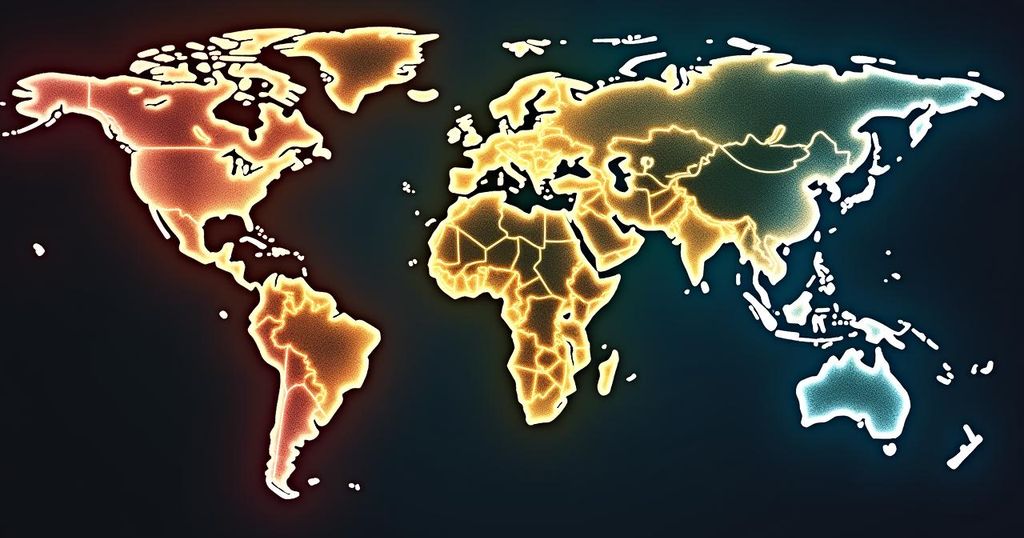South Africa and Brazil have emerged as leading nations in the global iGaming sector, with South Africa achieving a 30% online betting engagement and Brazil close behind at 22%. Blask’s analytics reveal fluctuations in market dynamics, highlighting Brazil’s increased volatility compared to South Africa. Both countries demonstrate specific player demographics that could shape operator strategies moving forward.
Recent developments in the iGaming sector have placed South Africa and Brazil firmly among the top five global markets. This shift, highlighted by Blask’s analytical insights, reveals a significant reconfiguration of the industry’s landscape. According to an article by iGaming Brazil titled “Brazil leads growth in online betting and surpasses England,” Brazil has notably surpassed England with 22% of its population engaging in online betting, compared to only 19% participation in England. The previous year, Brazil’s engagement was just 15%. Consequently, Brazil now ranks fifth for bookmaker usage behind New Zealand, Greece, Norway, and South Africa, the latter emerging as the leading nation globally with 30% of its population involved in online betting activities. Blask’s data for South Africa indicates fluctuations in market metrics throughout 2024, demonstrating significant peaks and valleys. For instance, South Africa’s Blask Index began the year at 53 million, fluctuated to a low of 50 million, and peaked at 62 million in September. In terms of effective Gross Gaming Revenue (eGGR), South Africa’s figures have remained fairly stable, with a yearly average remaining around $533 million. In contrast, Brazil’s metrics display higher volatility, wherein the Blask Index escalated from 169 million in January to a peak of 228 million in July, before tapering off to 215 million in September. Brazil’s eGGR data reveals an overall average of $10 billion, exceeding the figures reported by South Africa. A demographic assessment of players reveals distinctive profile characteristics in both countries. In South Africa, approximately 18 million individuals participate in iGaming, with the primary age group being 25 to 34, representing 35% of bettors. In contrast, Brazil has an estimated 47 million iGaming users, with a significant 26% in the 18 to 24 age bracket, indicating a younger demographic engagement. This analysis strongly suggests that South Africa and Brazil’s emergence into the upper echelon of global iGaming markets serves as both an opportunity and a challenge for industry operators. The trends visible in the Blask Index and eGGR metrics across 2024 indicate a sustained growth trajectory for both nations, advocating for strategic market entry or expansion approaches tailored to each region’s unique characteristics. Operators will benefit from adjusting their offerings according to the prevalent player demographics, particularly focusing on the income and educational backgrounds that influence user behavior.
The iGaming sector has seen a remarkable transformation with the entry of new markets that capture substantial user engagement, specifically South Africa and Brazil, which have secured positions in the top five globally. Historically dominated by long-established markets like England, this shift represents a substantial alteration in the competitive landscape. The data analyzed by Blask emphasizes the increasing traction gained by these emerging markets, particularly in terms of user participation rates and overall revenue generation. By examining the specific metrics associated with each nation, insights can be drawn regarding market volatility and player demographics that define the user experience in these regions.
The ascendance of South Africa and Brazil in the global iGaming sector underscores a pivotal moment of transformation within the industry. As illustrated, South Africa leads with a remarkable 30% engagement rate, while Brazil follows closely at 22%, both eclipsing traditional markets like England. The nuanced analysis of the Blask Index, eGGR, and eFTD metrics suggests that operators must tailor their methods to accommodate distinct demographic profiles and the inherent volatility of these emerging markets. The future growth potential in South Africa and Brazil delineates significant opportunities for those entities equipped to adapt and innovate within this dynamic landscape.
Original Source: next.io






